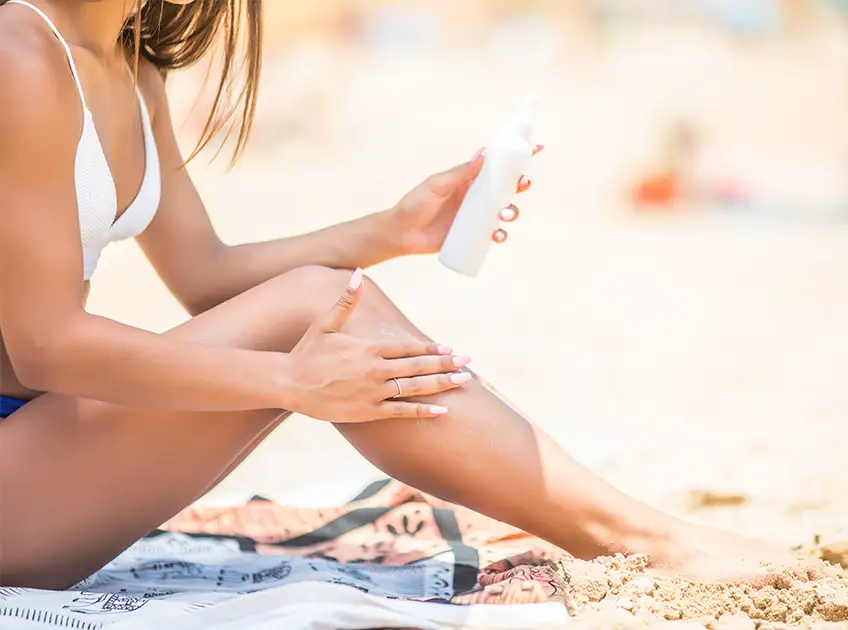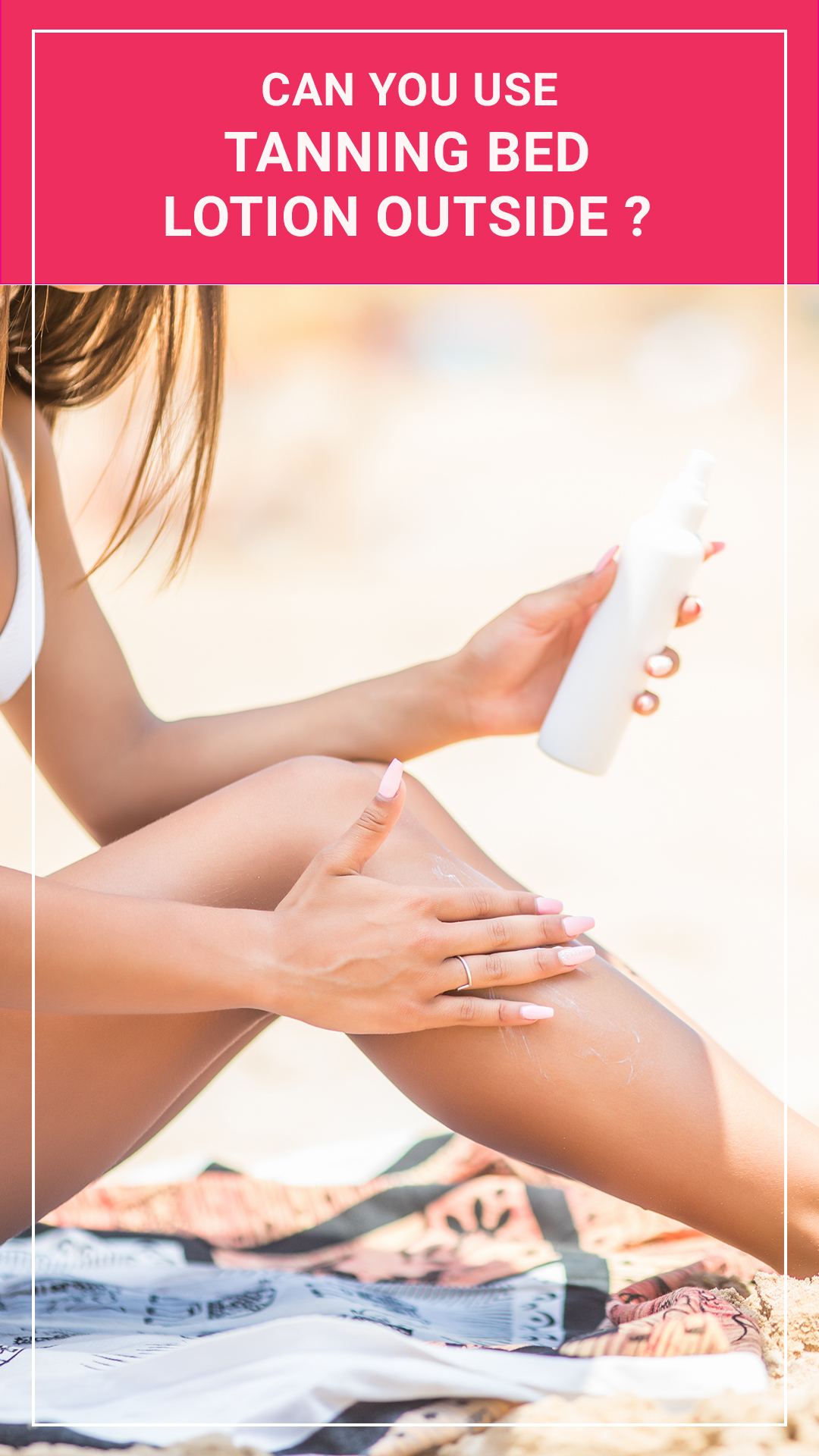
Important: This article is for informational purposes only. Please read our full disclaimer for more details.
Tanning helps to give you a beautiful golden bronze skin tone. It looks great on people with pasty white skin and lighter skin tones as they get a sun-kissed glow.
Whether you are tanning indoors or outdoors, taking care of your skin is equally important. While outdoor tanning exposes the skin to harmful UV rays, indoor tanning through self-tanners or spray tanners exposes the skin to chemicals.
Even though a tanning bed or sunbed comes under indoor tanning, it also exposes the skin to harmful UV rays. The tanning beds emit UVA and UVB that trigger melanin production, leading to the development of the tan.
What Is A Tanning Lotion?

Tanning lotion is meant to help your skin absorb UV rays more efficiently. It contains ingredients like tyrosine that speed up melanin production and is best for developing a great tan. At the same time, tanning lotion protects the skin from sunburn and uneven tanning. It contains ingredients that hydrate and moisturize the skin to prevent drying and peeling.
Can You Use Tanning Bed Lotion Outside?

Tanning lotions are made differently indoors and outdoors. If you are using one instead of the other, you must take certain precautions. For instance, tanning lotions for outside or suntan consist of broad-spectrum SPF, around 20-30, to protect skin from high-intensity sunlight. On the other hand, tanning lotions indoors don’t involve such a high level of protection. Applying tanning bed lotion outside may allow sun rays to penetrate and cause sun damage. Therefore, using indoor tanning lotions in the tanning bed and outdoor tanning lotions when basking under the sun is better. However, if you don’t have any other option, read on to find out how you can use tanning bed lotion outside.
Are Tanning Bed Lotions Suitable To Be Used Outdoors?
As the name suggests, tanning bed lotions are made to use in tanning beds. Tanning in the tanning bed is completely different from tanning under the sun, as you are in a controlled environment. The body is exposed to UV rays for a set period, and there is no sand or water to interfere with the product. If you intend to use tanning bed lotion outdoors, you should know how it is different from outdoor tanning lotions, which makes them problematic.
1. You Will Not Get Spf Protection
Indoor tanning lotions do not contain SPF, as it is not required. However, outdoor tanning lotions protect from strong UV rays yet allow tan to develop. Also, it ensures your skin will not be damaged by harmful sun rays. If you use indoor tanning bed lotion outdoors, you expose the skin to dreadful UV rays that increase the chances of sun damage. You might end up with sunburn and not suntanning.
2. Indoor Tanning Bed Lotions Are Not Water-resistant
While outdoor tanning lotions are water-resistant, indoor tanning lotions are not, as this feature is not required in them. Whether you are basking in the sun on a beach or pool, you need to wear water-resistant tanning lotion. It will not allow water to wash off the tanning lotion and expose the skin to UV rays. If you use tanning bed lotion outside and go in the water, the entire lotion will wash off, making skin vulnerable to damage. It will likely leave you with a patchy tan and dry skin.
3. Tanning Bed Lotion Will Give A Greasy Feel
Most tanning bed lotions are greasy, and this is probably not a feel or look you want when you are poolside or sitting at the beach. Besides giving a greasy look, indoor tanning lotion will allow sand and grime to stick to your skin. It could be a lot more uncomfortable and irritating. On the contrary, outdoor tanning lotions are not greasy and do not feel sticky or heavy on the skin.
How To Use Tanning Bed Lotion Outside?
If you are not left with any choice but to use a tanning bed lotion, following these tips can help make it suitable outside.
- Use Sunscreen- Since SPF plays a major role in outdoor tanning lotions, you should apply a coat of sunscreen with the tanning bed lotion. It will ensure that your skin is well protected from UV rays from causing sun damage.
Don’t use stronger SPF sunscreen, but something around SPF 20 or 30 that will protect the skin from sunburn yet allow it to tan. - Reapply Regularly- Since tanning bed lotion is not water-proof, you need to reapply it again and again. It becomes mandatory if you enter the pool or water, which makes lotion prone to washing off.
At the same time, tanning bed lotions or indoor lotions are designed for short spurts as you only need to spend 20-30 minutes in a tanning bed. It means they become ineffective after a certain time. It is also one of the reasons why reapplication is necessary.
Final words
Technically you may use tanning bed lotions outside; it is not recommended. You need to protect your skin with SPF to prevent it from burning. Likewise, you need to reapply it often to keep it effective for long hours. If you have no other option, ensure that your skin is well-protected and not vulnerable to sun burning. It is best to use the tanning lotions for their intended purposes, to make the most out of the carefully selected ingredients!
You Might Also Like
- Does Tanning Lotion Expire? How Long Will Tanning Lotion Last?
- 5 Best Tanning Lotions For Sensitive Skin
- Does Sunscreen Prevent You From Tanning?
- What To Wear In A Tanning Bed
- Can You Wear Makeup After Spray Tan? How Much Time To Wait
- Spray Tan Vs Self Tanner: Which One Is Best?
- Can You Get A Tan Through A Window?
- Can You Tan With Sunscreen
- How To Use Coconut Oil For Tanning?
Image Credit: freepik
















